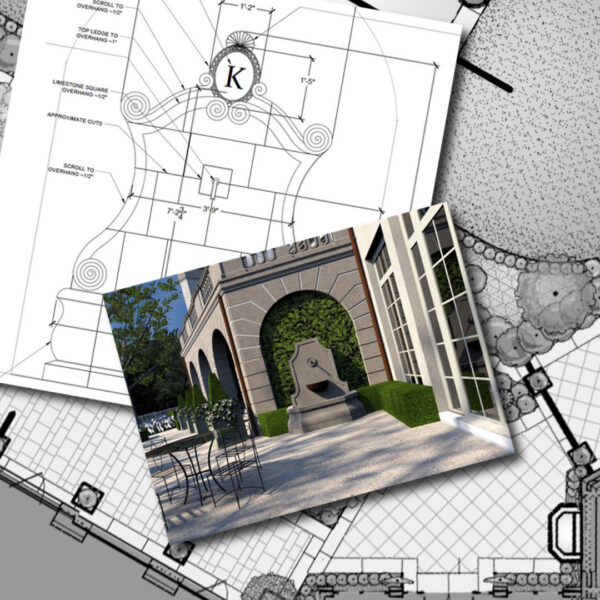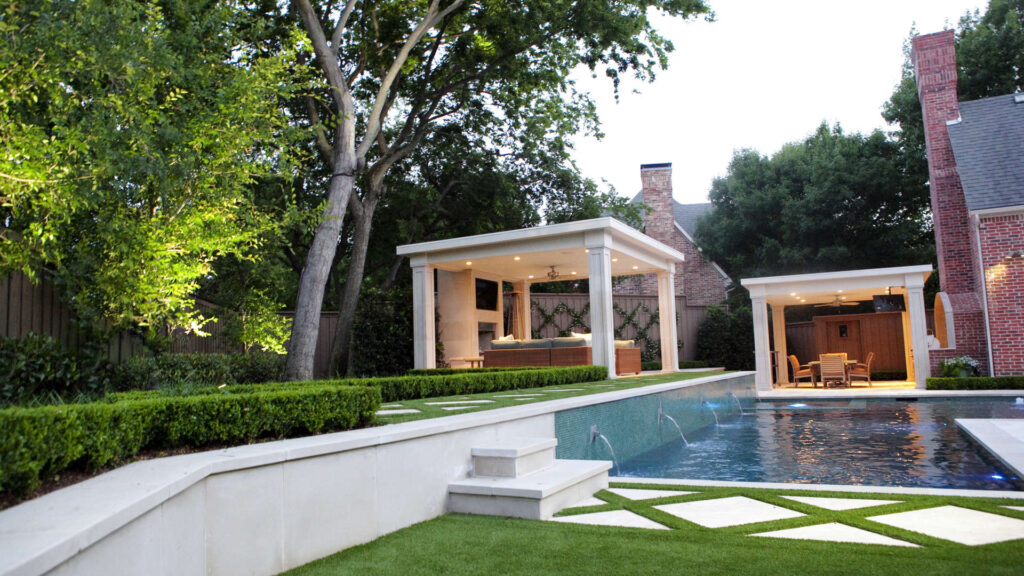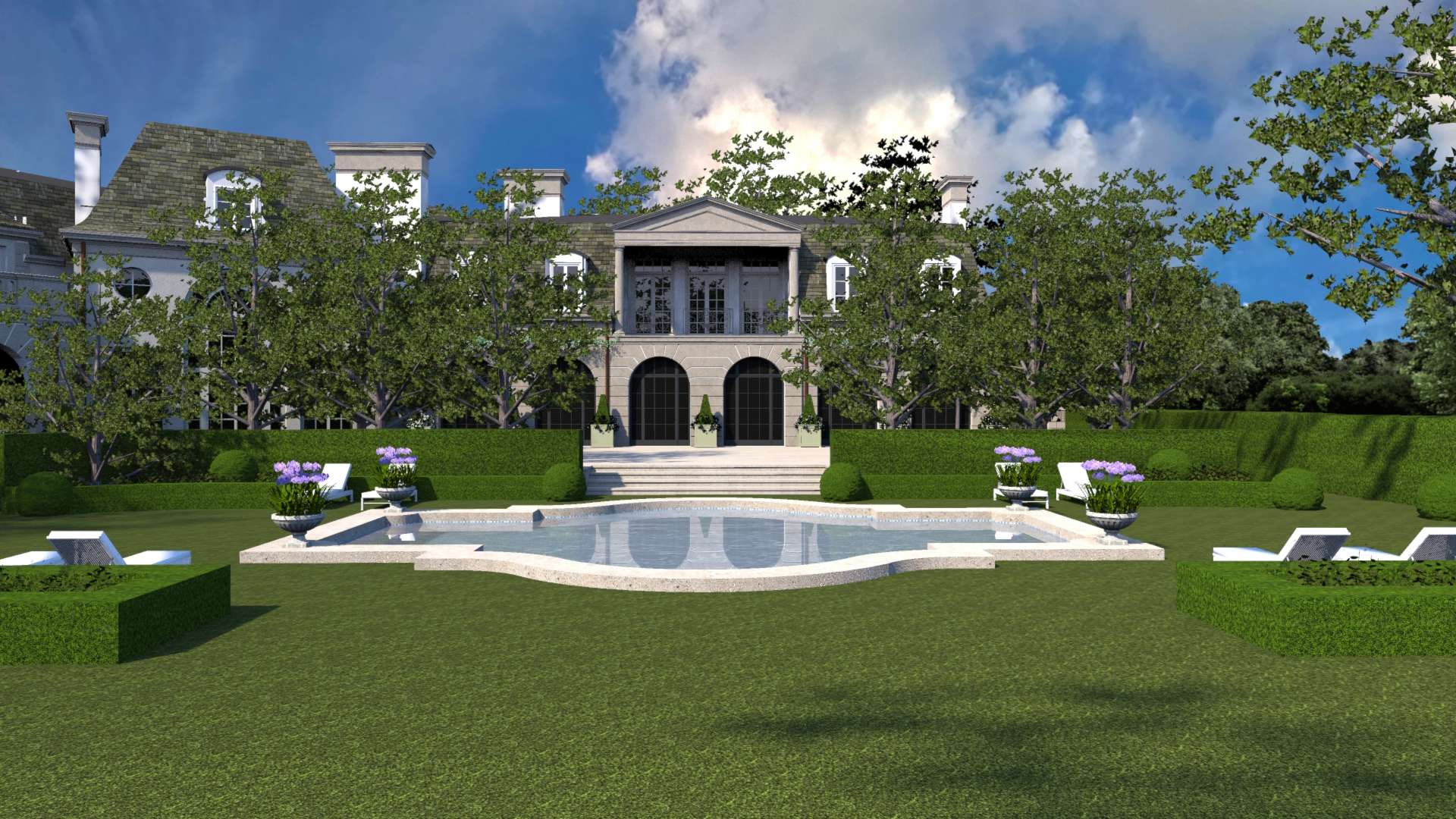In our experience, the best landscape design projects begin and end with realistic expectations. The better you understand your project, the better you can communicate with your designer, and as a result, it is more likely that your project will live up to your expectations. We’ve put together a list of the most commonly overlooked areas, and tips for establishing realistic expectations with your landscape designer.
Set a Realistic Budget

- Educate Yourself. Look through your inspiration photos—How much did the projects in your inspirational photos cost? Ask your designer or contractor about previous projects in their portfolio that closely resemble your desired project so that you will have a more realistic idea of what your project should cost.
- Use Real Numbers to Create a Budget. So many times budgets are ambiguous lump sums completely unrelated to the list of required work. To help correct this, we suggest imagining if you had to work backward, starting at the end of your project and working toward the beginning. Would your budget numbers be the same? Would your project be feasible? Understand the elements that will make up your project, create a list, and assign a realistic cost for those items to gain a better perspective of expected costs.
- Design then Refine. Sometimes the budget and the wish list do not perfectly align. At Matthew Murrey Design, we find it is best to work backward through a creative approach of designing, then refining. We find that getting everything on paper allows both you and the designer to understand the full scope of the project and how much it is expected to cost, then you can work together to determine the best steps to properly align the project scope with the budget.
- Trust the Process. Budgeting can be frustrating and painful at times. Trust your designer and trust the process to get you where you need to be.
Need help creating a realistic budget?
Ask about our budget consulting services!Work on a Realistic Timeline

-
Start Early. At Mathew Murrey Design, our projects typically take anywhere from 6 weeks to 3 months to design, depending on the complexity and scope. Therefore, we highly suggest that you do not wait until you are ready to install your project to start planning.
-
Don’t Rush! All good things take time, so spend the time planning and designing that is sufficient for the project. Time spent planning and designing will create efficiencies during construction to save you time and money during the install.
Understand Your Project

- Take Advantage of 3D Modeling. 3D technology is great for visualizing. It allows you to understand the size, scale, elevations, and details for your project. 3D modeling is the easiest way to understand what your finished project should look like and how it is composed.
- Make Material Samples and Finish Mockups Mandatory. Always, always, always get a mockup sample! Material samples and mockups are the best checkpoints to nailing the expectation. All samples and mockups should be made available and approved by you and your designer prior to install.
- Pay for Design Details. Make sure your designer is detailing all the elements of your project: Transitions at exterior thresholds, steps, wall elevations and details, fencing, gates, and paving patterns make up the bones of your garden or landscape and should not be overlooked, assumed or left to chance. Having design details and specifications to provide your installer or contractor eliminates the ability for the design intent to get lost in translation--it holds everyone accountable to perform as specified.
- Understand your Project. Be sure you understand your project, what it is made of, and how it is constructed. If you don’t know, ask questions. Your designer’s job is to remove any guessing and interpretation and to specify exactly how a project is to be constructed. If you do not understand a particular area or element of your project, chances are the contractors won’t either.
Good Maintenance is Key

- Provide Comprehensive Maintenance. Great gardens and landscapes require comprehensive maintenance to properly evolve and thrive. You can do it yourself or hire a professional company to do it for you, but whatever the case, make sure your plants and hardscapes are cared for properly to protect your investment.
- Monitor the Irrigation Regularly. Most failed landscapes start with the lack of irrigation monitoring. If you live in a state like Texas, the weather can change rapidly - from hot to cold, dry to wet. In these changing conditions, the irrigation has to constantly be monitored and adjusted to perform properly.
- Learn About the Horticultural Care for your Plants. Plants are living things - this means they take a reasonable amount of care. Even “low-maintenance” plants and landscapes require some care and nurturing in order to survive and thrive. Caring for a new landscape can be a learning process - like bringing home a new puppy. You have to learn its wants and needs, and then change as it evolves and grows.
- Trim and Prune Plants Properly. Know the style of your landscape or garden and manage plant growth accordingly. Is the desired esthetic loose and natural or trimmed and tailored? Depending on the size and style of your landscape and garden, the trimming and pruning techniques will likely vary.
- Keep your Designer Involved. Have your designer out annually to assess the care of your garden and landscape.
In conclusion, if you want your project to live up to your expectations, make sure your set realistic expectations. The most common areas that we see lacking realistic expectations are in budget, timeline, detail and upkeep. And remember, your landscape will only look as good a the care you give it. Hiring a "mow & blow” company that does not monitor irrigation, provide horticultural care, and lacks proper pruning/trimming techniques might save you money in the short term, but will definitely end up costing you in the long term.

